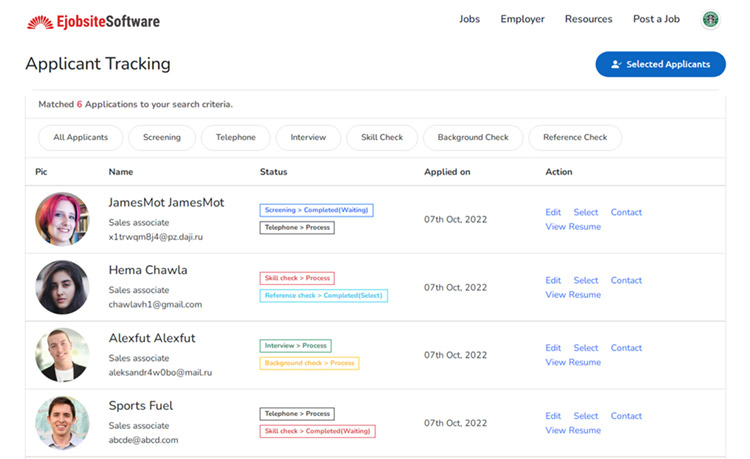An Applicant Tracking Software (ATS) is a software application that streamlines and automates recruitment processes, such as job postings, resume screening, and applicant communication.
The Applicant Tracking Software consists of various modules that serve different functions, all of which work together to make the recruitment process more efficient and effective. In this article, we will discuss the different modules of an ATS.
Job Posting Module
The job posting module is one of the most important modules in an ATS. It allows recruiters to create job postings and publish them on various job boards and social media platforms. This module typically includes tools that help recruiters create compelling job descriptions, manage job postings, and track the performance of job postings.
Candidate Sourcing Module
The candidate sourcing module helps recruiter’s source candidates from various channels, such as job boards, social media, and employee referrals. This module typically includes tools that help recruiters search for candidates, manage candidate databases, and automate candidate sourcing.
Resume Parsing Module
The resume parsing module is a powerful feature that allows recruiters to extract relevant information from resumes and store them in the ATS. This module typically includes tools that help recruiters parse resumes and create candidate profiles automatically.
Applicant Tracking Module
The applicant tracking module is the core module of an ATS. It allows recruiters to track candidates throughout the recruitment process, from the initial application to the final hiring decision. This module typically includes tools that help recruiters manage candidate workflows, schedule interviews, and communicate with candidates.
Interview Management Module
The interview management module helps recruiters manage the interview process more efficiently. This module typically includes tools that help recruiters schedule interviews, send interview invitations, and collect feedback from interviewers.
Candidate Assessment Module
The candidate assessment module allows recruiters to assess candidates more effectively. This module typically includes tools that help recruiters evaluate candidates based on predefined criteria, score candidates based on their performance in various assessments, and generate reports on candidate assessment results.
Reporting and Analytics Module
The reporting and analytics module provides recruiters with insights into their recruitment process. This module typically includes tools that help recruiters generate reports on various recruitment metrics, such as time-to-hire, cost-per-hire, and candidate source.
Compliance and Security Module
The compliance and security module ensures that recruitment processes comply with legal and regulatory requirements. This module typically includes tools that help recruiters manage data privacy, security, and compliance with labor laws.
Onboarding Module
The onboarding module helps recruiters onboard new hires more efficiently. This module typically includes tools that help recruiters manage the onboarding process, collect required documents, and communicate with new hires.
An ATS consists of various modules that work together to make the recruitment process more efficient and effective.
The different modules serve different functions, such as job postings, candidate sourcing, resume parsing, applicant tracking, interview management, candidate assessment, reporting and analytics, compliance and security, and onboarding.
By using an ATS with these modules, recruiters can streamline and automate the recruitment process and improve their hiring outcomes.
